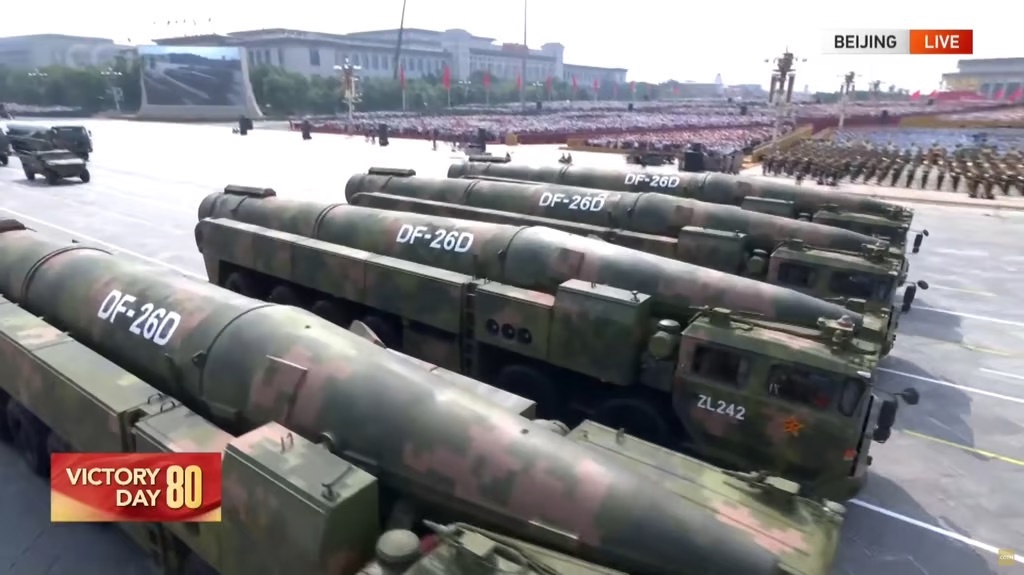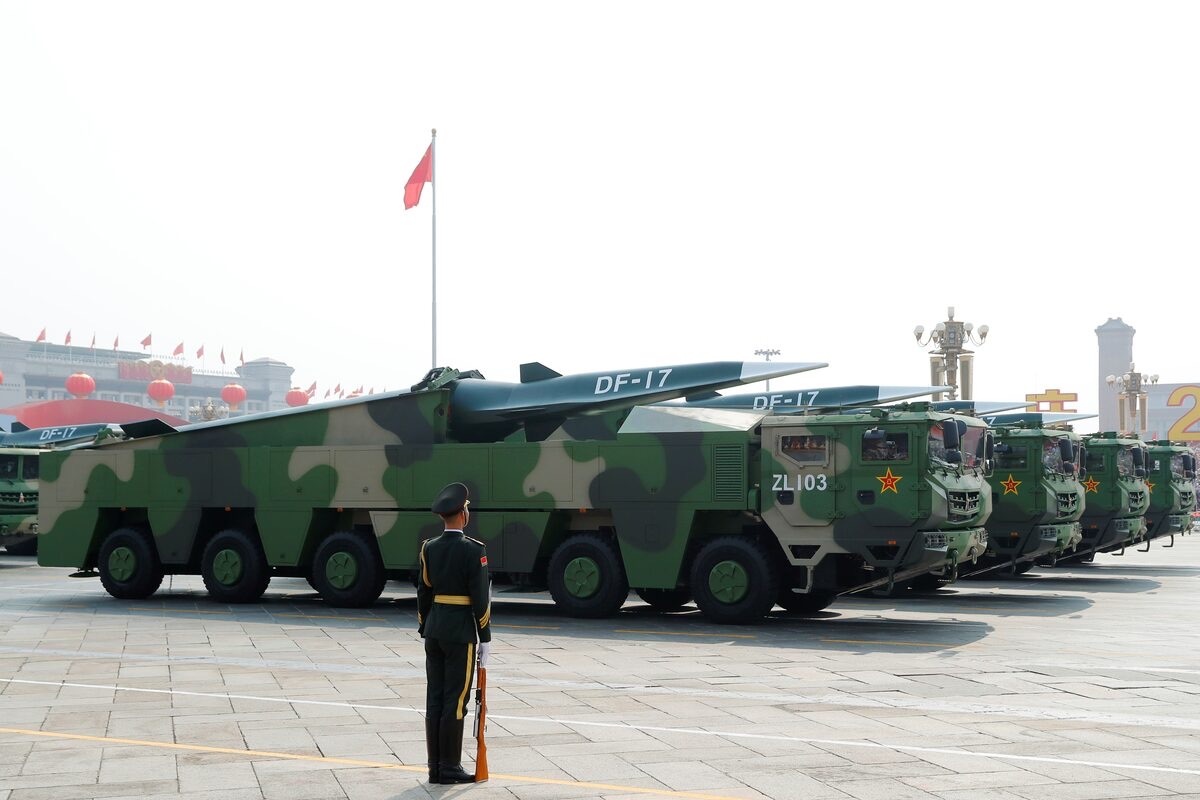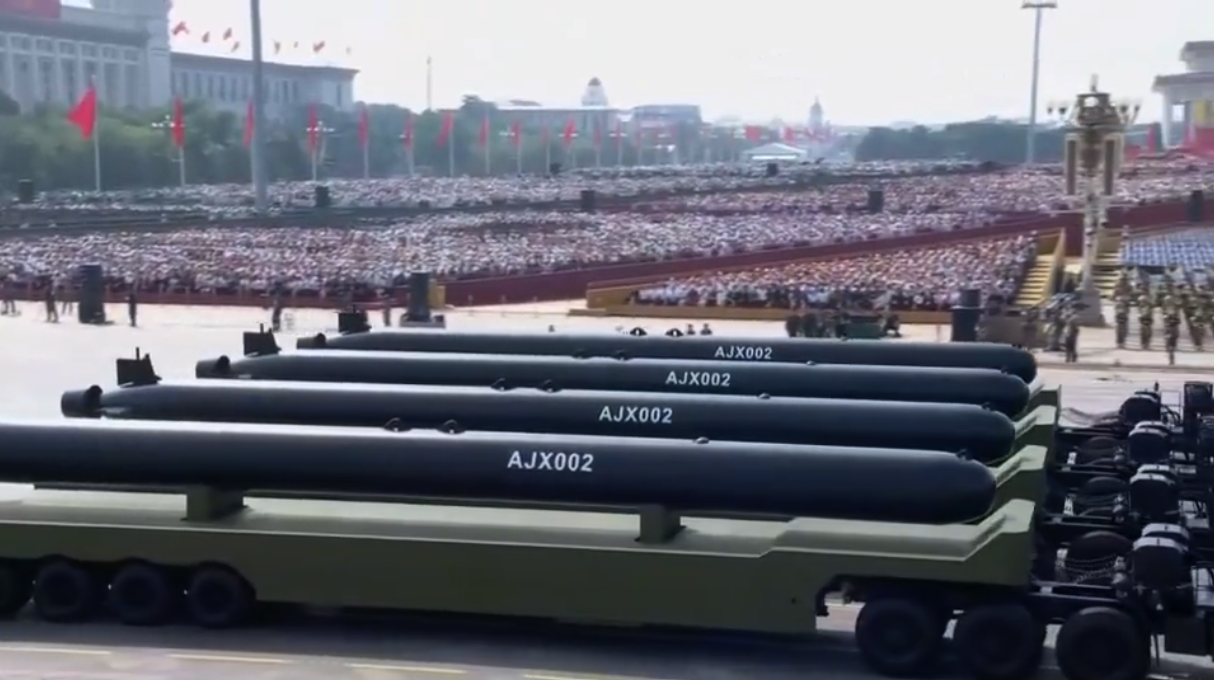The annual event, marking the 80th anniversary of China's victory over Japan in World War II, is held in Beijing's Tiananmen Square. More than 10,000 troops are taking part in the parade, but the focus will be on China's defense technology.
Hypersonic missile
The People’s Liberation Army Rocket Force (PLA Rocket Force) displays the DF-26D, a variant of the DF-26 intermediate-range ballistic missile. This weapon can carry both nuclear and conventional warheads, with a reported range of up to 5,000 km. According to SCMP , the DF-26D is considered an anti-ship ballistic missile.
 |
DF-26D missile. Photo: CCTV . |
Next up is the YJ-17 nuclear-capable missile. China typically uses the designation “YJ” for anti-ship missiles, so the YJ-17 is believed to be a new version of the DF-17, a hypersonic intermediate-range ballistic missile first seen in 2014, according to the Center for Strategic and International Studies (CSIS). The missile is believed to carry a conventional warhead, but could be nuclear-capable.
While the DF-17 is a land-based missile, the YJ-17 is believed to be launched from vertical launch tubes on naval warships, according to CNN .
“The DF-17 has demonstrated a very high level of accuracy in tests, with a US government official saying a test warhead hit a static target ‘within a few meters’,” according to CSIS .
 |
The DF-17 missile appeared in China's previous military parade. Photo: Reuters . |
Combined with other anti-ship missiles featured in the parade such as the YJ-15, YJ-19 and YJ-20, all are capable of being launched from guided-missile destroyers and frigates in China's world- largest naval fleet.
Unmanned submarine
The September 3 parade marked the official debut of two new large unmanned underwater vehicles (XLUUVs), a field of naval warfare in which China is leading the world, at least in terms of numbers, according to Naval News .
The two XLUUV models first shown publicly at the parade are “new” designs, likely the successful result of a three-year testing program.
 |
AJX002 unmanned submarine. Photo: Reuters . |
The first, labeled AJX002, is about 18-20 meters long and 1 to 1.5 meters in diameter. The second is about the same length but much wider, about 2-3 meters. It also has two antenna masts, while AJX002 does not.
The specific mission of these XLUUVs is currently unknown, but analysts believe they could be equipped with torpedoes, mines, or simply serve reconnaissance purposes.
Anti-aircraft weapons
China displayed at least two types of anti-aircraft laser weapons at the parade, including a large laser system that state television said would be installed on warships.
There is also a land-based version, a laser system mounted on a large eight-wheeled truck, which can accommodate an additional power source to overcome the lack of power that previous laser weapons have suffered from.
Lasers fall into the category of “directed energy weapons.” Instead of using projectiles to destroy targets through kinetic impact, these weapons rely on electromagnetic energy to disable targets by generating heat, disrupting internal electronic systems, or blinding sensors such as optics and radar.
Directed energy weapons also have an economic advantage over kinetic weapons, with a laser shot costing a fraction of the cost of a bullet or missile. Logistics are also simpler, as there is no need to transport heavy metal projectiles along with the weapon, just the power source.
Source: https://znews.vn/vu-khi-sieu-thanh-xuat-hien-trong-dieu-binh-trung-quoc-39-post1582158.html




































































































Comment (0)